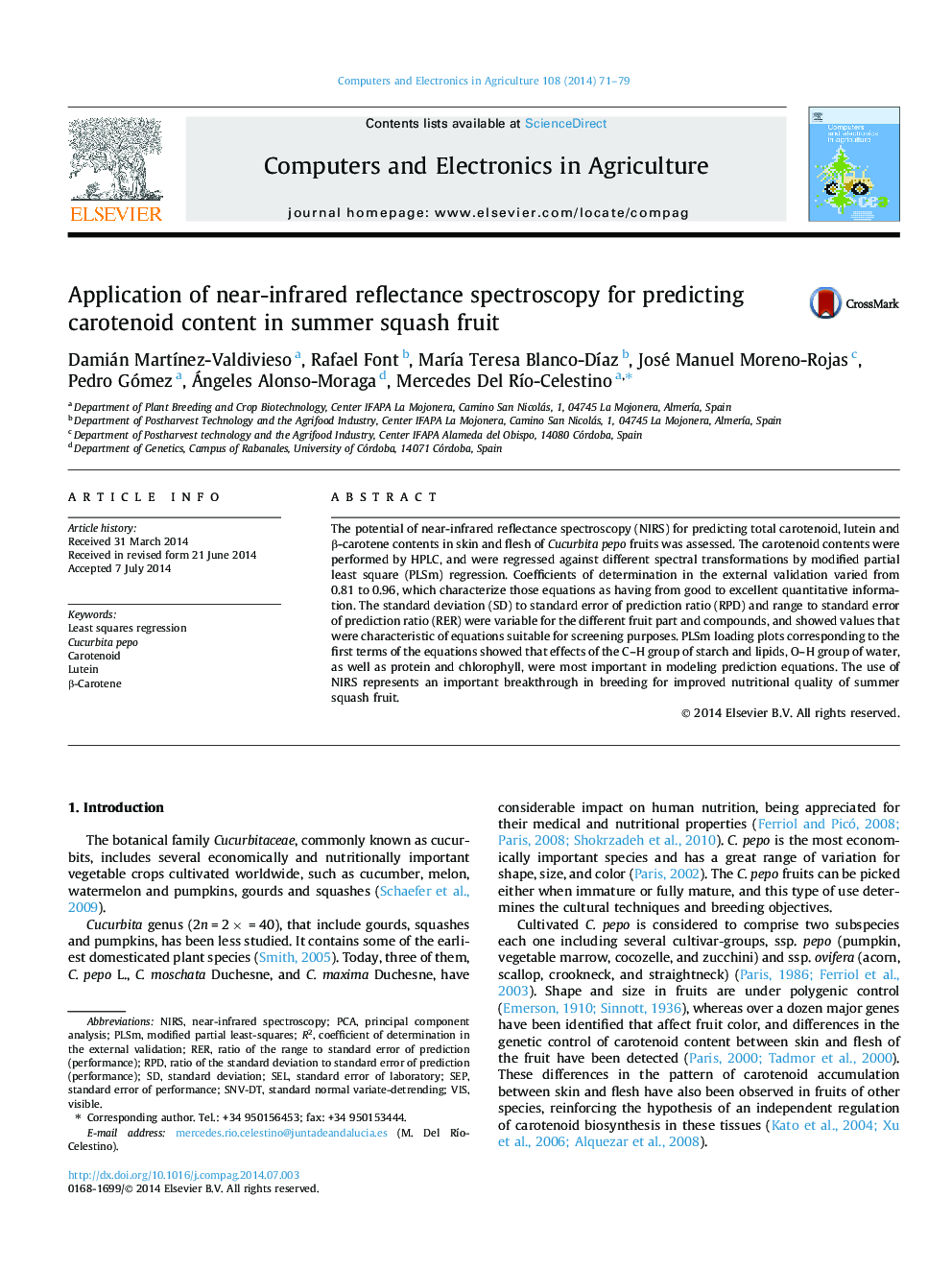| Article ID | Journal | Published Year | Pages | File Type |
|---|---|---|---|---|
| 84260 | Computers and Electronics in Agriculture | 2014 | 9 Pages |
•Wide variability in lutein, β-carotene and total carotenoids in summer squash fruit.•A rapid method for determining carotenoid compounds in summer squash fruit is proposed.•NIRS technology can reduce laboratory input in breeding programmes and food chemistry.
The potential of near-infrared reflectance spectroscopy (NIRS) for predicting total carotenoid, lutein and β-carotene contents in skin and flesh of Cucurbita pepo fruits was assessed. The carotenoid contents were performed by HPLC, and were regressed against different spectral transformations by modified partial least square (PLSm) regression. Coefficients of determination in the external validation varied from 0.81 to 0.96, which characterize those equations as having from good to excellent quantitative information. The standard deviation (SD) to standard error of prediction ratio (RPD) and range to standard error of prediction ratio (RER) were variable for the different fruit part and compounds, and showed values that were characteristic of equations suitable for screening purposes. PLSm loading plots corresponding to the first terms of the equations showed that effects of the C–H group of starch and lipids, O–H group of water, as well as protein and chlorophyll, were most important in modeling prediction equations. The use of NIRS represents an important breakthrough in breeding for improved nutritional quality of summer squash fruit.
Graphical abstractFigure optionsDownload full-size imageDownload as PowerPoint slide
